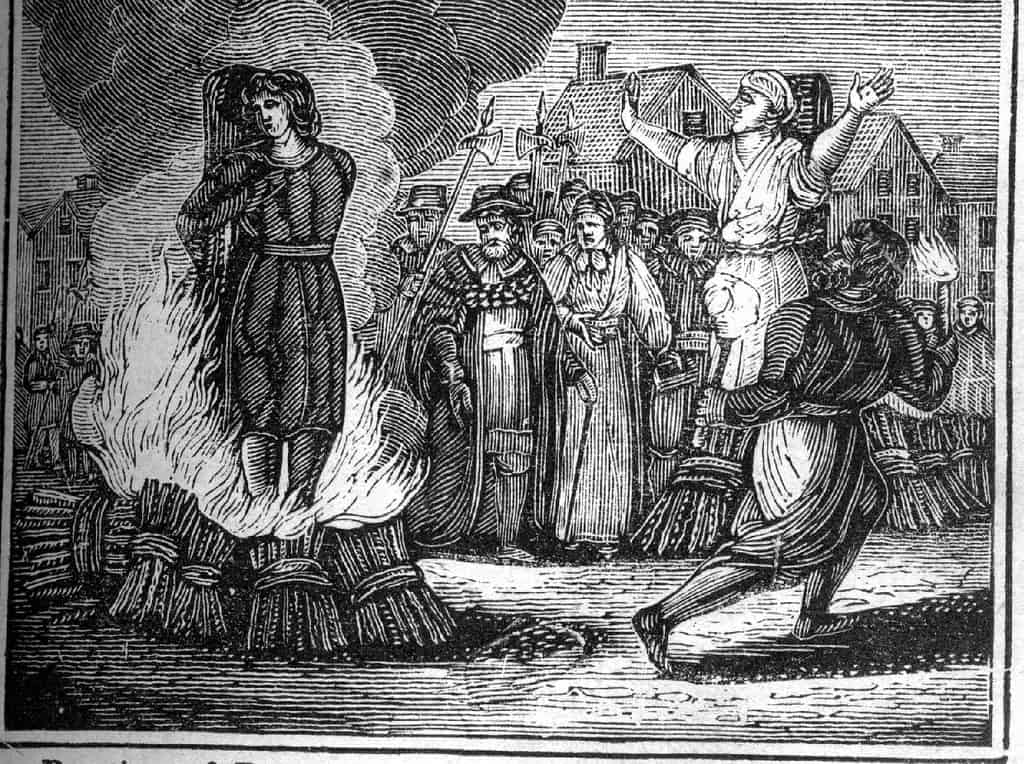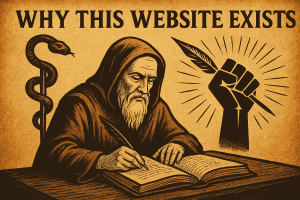For centuries, witches have been feared, hated, and hunted. Even today, pagans and Wiccans face suspicion, especially in cultures where conservative Christianity dominates. But why has the witch carried such symbolic weight across history? Why did the Church work so hard to destroy them?
The answer lies not only in the history of witch hunts but also in something much older: the story of Eve, Lilith, and their Daughter. This ancient narrative reveals how the feminine has been demonized, divided, and suppressed — and how witches became the target of that fear.
The Invention of the Witch
During the Inquisition, the Church shifted its focus from heretics and Jews to witches. By the late 1400s, Pope Innocent VIII declared witchcraft to be real and heretical, reversing earlier church laws that had dismissed witches as superstition.
Of course, nothing says “innocent” like authorizing torture chambers. Under the banner of holiness, Innocent helped kickstart one of history’s bloodiest persecutions — a papal decree that would have made the Devil himself blush with envy.
This created a new enemy: women who healed, midwives, herbalists, or simply those who dared to live outside male control.
Eve, Lilith, and the Daughter
To understand why the witch became such a powerful symbol, we need to look at one of humanity’s oldest myths.
- Eve was sanctified as the obedient mother of humanity, created from Adam’s rib.
- Lilith, in older traditions, was Adam’s first partner — equal, untamed, and unwilling to bow. For her refusal, she was cast out and demonized as a child-killing spirit of the night.
- Between them lies the Daughter — the silenced feminine wisdom that holds the balance of both obedience and freedom, fertility and independence.
It is this Daughter’s voice — the voice of healing, intuition, and embodied wisdom — that later resurfaced in the women branded as witches.
Witches as the Daughters of Lilith
The witch was never just a woman with herbs or charms. She was a living mirror of Lilith: independent, sexual, and unwilling to submit. Manuals like the Malleus Maleficarum — “The Hammer of Witches” — were written by celibate men whose main expertise in women came from imagining orgies with demons. The book wasn’t theology; it was medieval fan fiction weaponized into law.
The persecution often centered on the body. Women were stripped, searched for “devil’s marks,” and tortured in ways that focused obsessively on their sexuality. Confessions wrung from agony only reinforced the myth.
Through these trials, the Daughter’s wisdom was choked again. The suppression of the feminine — rooted in earth, cycles, medicine, and body — was reframed as evil.
Mary and the Fear of the Feminine
Even the Church’s own sacred feminine figures came under suspicion. Excessive devotion to Mary was sometimes treated as dangerous, as though it tipped the balance toward the feminine.
In one case, a woman was reported to the Inquisition simply for smiling at the mention of Mary. Imagine that — heresy by grin.
The message was clear: any sign of feminine power threatened the patriarchal order.
Witches as Scapegoats in the Witch Hunts
Whenever famine, plague, or unrest shook Europe, witches became convenient scapegoats. The Holy Inquisition — “holy” in the same way a vulture is merciful — fanned these fears, turning villages into witch-hunting arenas.
Most of the accused were women who were old, widowed, poor, or simply inconvenient. But even powerful women weren’t safe. Joan of Arc, who dared to say God spoke to her, was condemned as a witch. Apparently, God had a strict no-girls-allowed policy — unless you were a cloistered virgin nodding quietly in the pews.
The witch became a projection screen for society’s deepest fears about disorder, rebellion, and sexuality.
The Legacy of Persecution of Women
Although the witch hunts eventually ended, the archetype remains. Even today, women who claim authority outside traditional structures — through independence, sexuality, or spirituality — are often branded dangerous or deviant. The methods have changed, but the old suspicion lingers.
The story of Eve, Lilith, and their Daughter shows us what was really at stake. Eve was sanctified but silenced. Lilith was cast out and demonized. The Daughter — the fullness of the feminine, integrating both — was smothered.
Witches carried that Daughter’s voice, and the Church’s fear of them was a fear of the feminine itself.
Closing Thoughts: Who Was Behind It?
And here is the real question: how could a Church claiming to follow Christ — a teacher of compassion — torture and burn women in his name? How could the God of love demand such cruelty?
From a Gnostic Christianity perspective, the answer is unsettling. It wasn’t the true God of light who demanded blood. It was the Demiurge — the false god of control, hierarchy, and fear. In branding the feminine as evil, the Church served not Christ, but the Demiurge’s obsession with domination.
The witch hunts show us the truth: the persecution of women was never about holiness. It was about power — and power wielded in the service of a counterfeit god.
More about Eve, Lilith, and Norea here
Before saving, open your browser’s print dialog and turn off Headers and footers (the title and URL line).
Chrome / Opera / Edge: Menu → Print → uncheck Headers and footers • Firefox: More settings → turn off Print headers and footers • Safari: already clean


